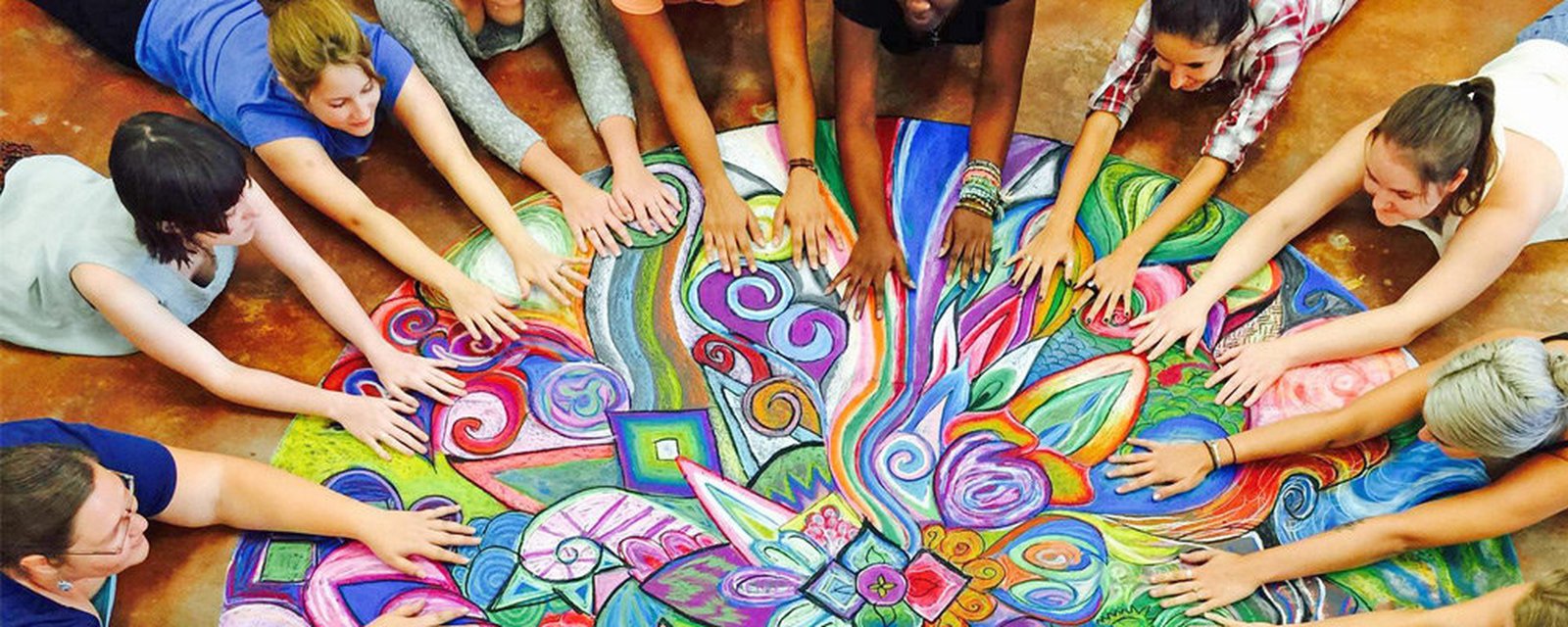Emotional abuse can be a very hard thing to get one’s head around and virtually impossible to recover from. A childhood goes wrong, a relationship turns painful, or perhaps a life event goes awry, leaving scars. For most, expert art therapy in St. George UT helps recover hidden emotions, and people need something a little more to express and heal them. That is where art therapy comes in. As professional art therapists, this creative approach often unlocks feelings we may not have even known we had. It is more than drawing or painting; it is a powerful healer from deep emotional wounds.
In this blog, let’s explain how expertise in art therapy could be the answer to mental health treatment of emotional trauma, how it works, why it’s effective, and explore ways that it can provide a safe space to heal.
What is Expert Art Therapy in St. George UT?
It is a form of therapy in which people express themselves through art-making. Unlike traditional talk therapy, this treatment allows people to relate through creative activities like drawing, painting, sculpting, or other digital tools.
It is not about creating a masterpiece. The goal is to express your thoughts and feelings in a new, wordless way. A kind of art therapy could be very helpful for people who have difficulties putting their emotions into words. Sometimes, the feelings cannot be expressed or are too painful to discuss, and creating art allows them to voice them.
How Art Therapy Helps in Dealing with Emotional Trauma
The emotional traumas related to experiences of being stuck, feeling overwhelmed, or disconnected can be best dealt with by the creation process of art therapy. That is when words fail to express what is happening; images, shapes, and colors can speak for us. Expert art therapy in St. George UT helps people express thoughts they cannot explain, even to themselves.
This process, in turn, opens doors to understanding trauma. Over time, this expression might bring other important insights and breakthroughs to aid healing. Working through an expert art therapist allows people to look into their art, what it holds, and how it connects to their emotional trauma.
Art Therapy Provides a Safe Setting for Healing
Art therapy is a powerful healing tool. It provides a judgment-free environment. Here, a person can express emotions freely. They are not judged for their perceptions. Sometimes, individuals struggle to express traumatic experiences. They may feel self-doubt. Fear of judgment can also hold them back. Shame about their emotions complicates things further. It allows them to do this through a form of expression, art.
Nothing is a bad answer in this creative space, and nothing is bad art. What is important is the process- the opportunity for people to express what they are feeling without explaining or defending it. This lack of obligation to explain or defend can be incredibly healing for people working through trauma.
Reconnecting Through Art
Trauma typically leaves a person disassociated from himself. He feels numb and detached, as though he is observing his life being played out through someone else. Art therapy reconnects people to their feelings, bodies, and interior selves. The creative process often enables them to explore their feelings better, which may be less overwhelming than trying to talk about them.
Art then becomes a link between their world and the outside world. It gives them sufficient time to work through emotions at their own peaceful pace. The process, in time, serves as a form of refocusing in life since this process may be part of a healing mechanism from traumatic events.
The Power of Symbolism in Art Therapy
People in art therapy often use symbols and images to give words to their feelings. For example, a person might draw a dark storm cloud to represent sad feelings or a broken bridge to represent a broken relationship. Sometimes, symbols can be more powerful than words because they speak right to our emotions.
The art therapist helps the individual find meaning in symbols or representations that can relate to the trauma they have experienced. Working with people can uncover hidden meanings. This approach may provide insight into feelings and help individuals move toward healing.
No artistic talent is required
Another misconception of art therapy is that a person needs to be “good” at art. That is simply not true. Artistic therapists often argue that it is talent or skill, but the process of the experience of art is most important.
You do not need to be an artist to express what is within you. It has nothing to do with art but everything to do with what the piece says. Whether scribbling, painting, or molding clay, all the directions focus on expressing what’s inside you and healing.
Who Can Benefit from Art Therapy?
Art therapy suits not only children and artists; it applies to anyone who experiences emotional trauma. Such a therapy could benefit children, middle-aged people, and seniors. Expert art therapy in St. George UT has treated people who have experienced abuse, accident victims, bereavement patients, and others.
This can prove particularly valuable for those who struggle to speak about their traumatic experience. Art therapy might serve as a medium to facilitate recovery for someone who feels ill and incapable of being cured of their trauma by “unfreezing” it. This can even complement traditional talk therapy when you use it in balance.
Getting Off the Chain: The First Step to Recovery
Thus, if emotional trauma has touched your or somebody’s life, professional art therapy would be a wonderful way to proceed with healing. It is an expression and investigation of feelings that cannot be discussed. People may regain contact through creativity, recover repressed emotions, or find a safe space for healing.
Healing from trauma is a process, and art therapy is part of that process. It does not substitute for regular therapy sessions, but it opens yet another avenue to healing the emotions. So, if you are interested in how to apply art therapy to help you, you could consider getting hold of an expert in art therapy to discuss options further.
Conclusion
In summary, expert art therapy may be one of the tools required for handling emotional trauma in life. It provides security for holding negative emotions and helps reconnect with oneself through the creative capacity of releasing feelings. Sometimes, words cannot express these feelings. Expert art therapy in St. George UT can provide a new way to heal. It helps when you struggle to talk about trauma. This approach is gentle yet powerful for recovery.



